- Home
- Encyclopedia
- Protecting Public Land: Frank Mondell, Theodore...
Protecting Public Land: Frank Mondell, Theodore Roosevelt and Devils Tower National Monument
Devils Tower in northeastern Wyoming holds the distinction of being the nation’s first national monument, established under the Antiquities Act of 1906. The volcanic neck can best be described as a natural marvel, formed over millions of years as a volcano eroded until only the hard igneous rock of its core remained.
It’s hard to miss. Even travelers along Interstate 90, more than 30 miles away, can spot the tower rising above the surrounding prairie.
Image
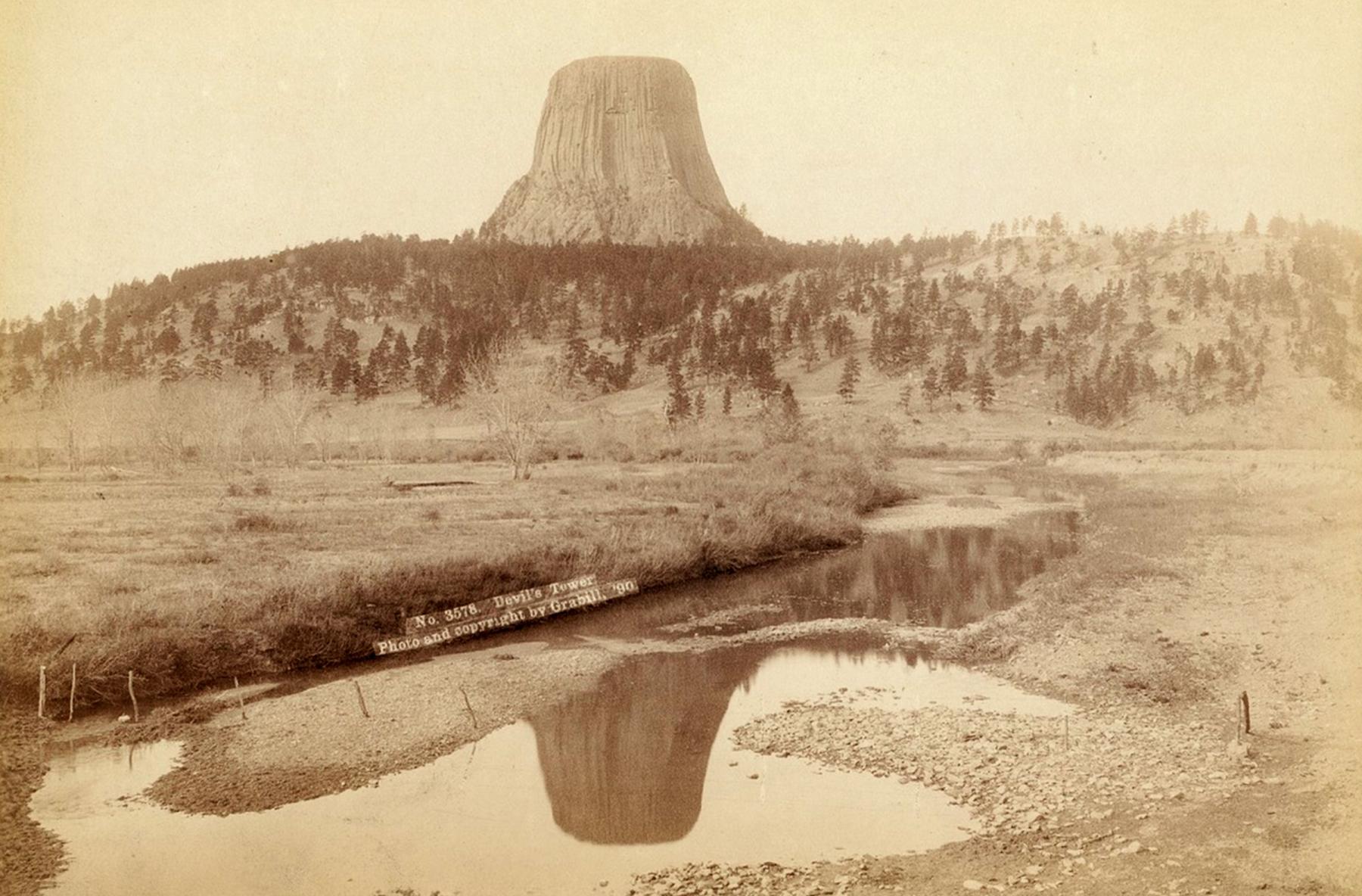
Native Americans also recognize the tower’s importance in history and culture. More than 20 tribes regard the tower and the area around it as spiritually significant. The Lakota call it “Mato Tipila” or Bears Lodge, referring to the story of seven sisters who ran from a giant bear. To reach safety, the sisters prayed to the Sky, and the ground rose from beneath them to lift them above the bear’s clutches. The bear clawed the tower as it rose, and its claw marks remain today as the tower’s distinctive columns of igneous basalt.
Devils Tower did not become a national monument without a fair share of Washington, D.C. deals. At the same time, preservation of the tower was not always welcomed by Wyoming citizens, many of whom thought the declaration an overreach of federal power and damaging to the logging and mining industries.
Image
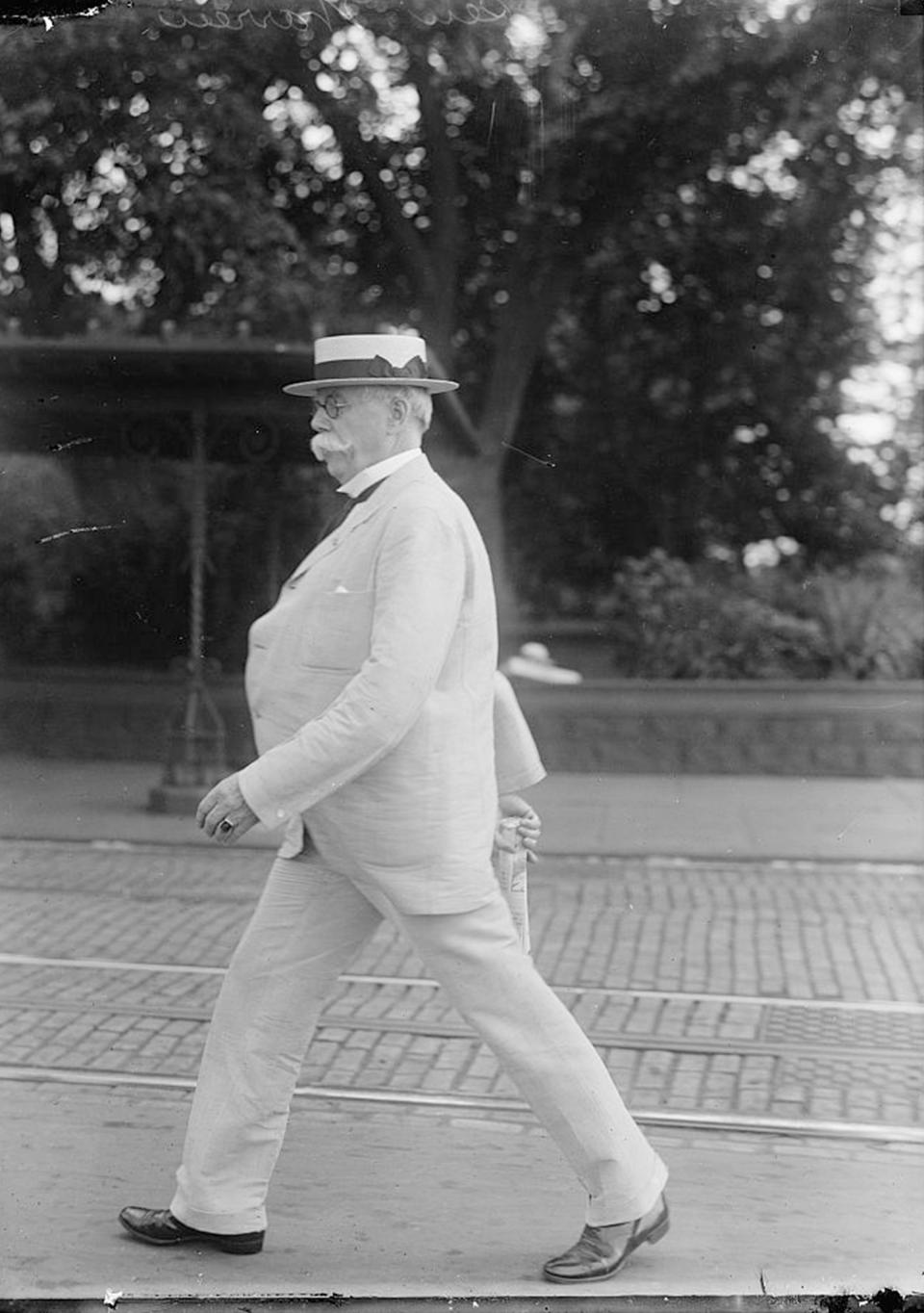
Wyoming’s federal delegation was also divided on the issue. Wyoming’s U.S. senator, Francis Warren, for example, despite the interests of Wyoming industries, was a strong advocate for making Devils Tower a national monument. Yet it is Rep. Frank Mondell who receives the most praise today. Both were Republicans.
Even the National Park Service account of the history behind Devils Tower credits Mondell for much of the politics behind passing the Antiquities Act and influencing President Theodore Roosevelt, also a Republican, to make Devils Tower the first national monument.[1]
The claim is curious, because unlike many of Mondell’s other accomplishments in office, he is silent on Devils Tower. Mondell made a habit of recording nearly every vote he participated in, especially regarding land and related issues. The voting record he left is distinctly anti-conservationist.
The Antiquities Act of 1906
Congress began efforts to conserve American landscapes in the 1890s. In fact, Devils Tower was almost immediately in the discussion, when Sen. Warren introduced an amendment to the Forestry Preserve Act of 1891 to include the tower and surrounding forest. The amendment, like much of the bill, was beaten out in committees and failed to materialize into a floor vote. Any attempt to preserve space had to go through the same slow and difficult process of Congressional deal-making. This prevented many large-scale, effective preservation projects.
With Roosevelt in office beginning in 1901, preservation and conservation of public lands received the strong backing of the White House. Roosevelt was deeply supportive of preservation and conversation projects for much of his life.[2]Still, it was an uphill fight in Congress for any measure to preserve spaces for future research and recreation. The tide turned when Rep. John F. Lacey, a Republican from Iowa, was appointed chair of the House Committee on Public Lands. Lacey, like Roosevelt, felt the preservation of spaces was imperative.[3]
Lacey, Roosevelt’s voice in Congress, smoothed the way for increasingly more substantial preservation bills. Lacey had a particular fondness for antiquities, specifically manmade historic sites such as the Anasazi cliff dwellings in Colorado. This fondness led him to believe there must be a better way of saving these spaces.[4] The Antiquities Act of 1906 was designed to streamline the process: Congress would give the president permanent power to declare America’s spaces for preservation, effectively eliminating Congress’s role. Section 2 of the bill reads:
“That the President of the United States is hereby authorized, in his discretion to declare by public proclamation historic landmarks, historic and prehistoric structures, and other objects of historic scientific interest that are situated upon the lands owned or controlled by the Government of the United States to be national monuments, and may reserve as a part there of parcels of land…[5]”
Working within Congress was Lacey’s talent. He would often, for example, offer a preservation bill and then quickly counter it with a bill directed toward development. In this way he could push for larger preservation bills for the price of earmarking other pieces of land for development. The strategy saved millions of acres with little opposition, for the development tradeoff.
Image
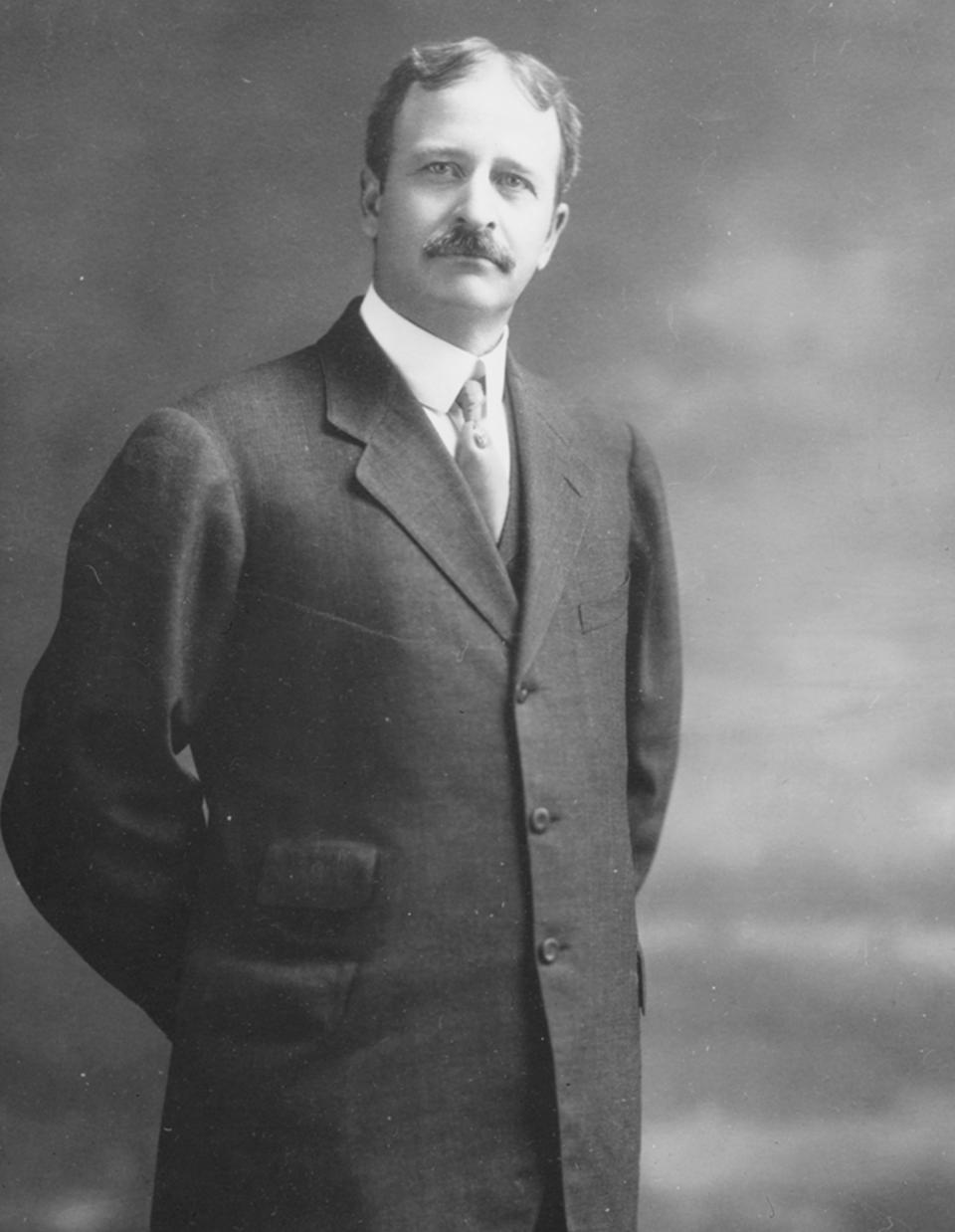
One of these tradeoffs secured the Antiquities Act when a congressman from Texas, Mr. Stephens, protested that the bill would be “abused.” Stephens feared the bill would tie up all the remaining federal land. In response, Lacey argued that the Antiquities Act would not be used for natural conservation, but for, “objects of special interest.” To sweeten the deal, Lacey traded Stephens’ no objection for an agricultural bill— “...by which the very evils that my friend is protesting against can be remedied.”[6] He was referring to the possible loss of land that could be developed.
With methods like these, the bill moved quickly through both chambers and rarely faced a recorded vote; each reading passed by a simple voice vote and was referred to the House Committee on Public Lands three times.[7] Likely this speed was due to the influence of the president and Lacey’s strategy. Unfortunately, no voting record survives from the Public Lands Committee in 1906—so we have no indicator of how members on the committee such as Rep. Frank Mondell voted on the bill. And Mondell himself, as we have noted, did not mention his votes on the question in his memoirs or in the personal voting records he kept. By June 8, 1906, the Antiquities Act became law with the president’s signature.
There’s no doubt that the Antiquities Act of 1906 greatly expanded the powers of the president. Congress’s concern for overreach was thus well founded, and Lacey’s first response to Stephens’ objections was not entirely honest. The difference between preserving prehistoric manmade artifacts and natural landmarks was blurred even before the Antiquities Act was in Congress.
President Roosevelt had been interested in preserving Devils Tower since 1903.[8] He probably never visited the site, though he must have known he was near it when, on the Burlington Railroad, he passed close by the Black Hills that year.
On Sept. 24, 1906, Roosevelt designated the tower and the surrounding 1,513 acres a national monument. Roosevelt’s declaration captured the sentiment of the day and the feeling of awe the tower inspired:
“Whereas the lofty and isolated rock in the State of Wyoming known as the ‘Devils Tower,’ situated upon the public lands owned and controlled by the United States is such an extraordinary example…as to be ‘a natural wonder’ and an object of historic and great scientific interest and it appears that the public good would be promoted by reserving this tower as a National monument…[9]”
Mondell’s role in the passage of the Antiquities Act and the selection of Devils Tower is less clear than the official National Park Service history of Devils Tower suggests. In 1955, historian Ray Mattison wrote of Mondell, “It was apparently as the result of his influences more than that of any other individual, that President Roosevelt…. proclaimed Devils Tower as national monument.”[10] Mattison’s claim is dubious; the record is strangely silent on Mondell’s actions surrounding the preservation of the tower.
Image
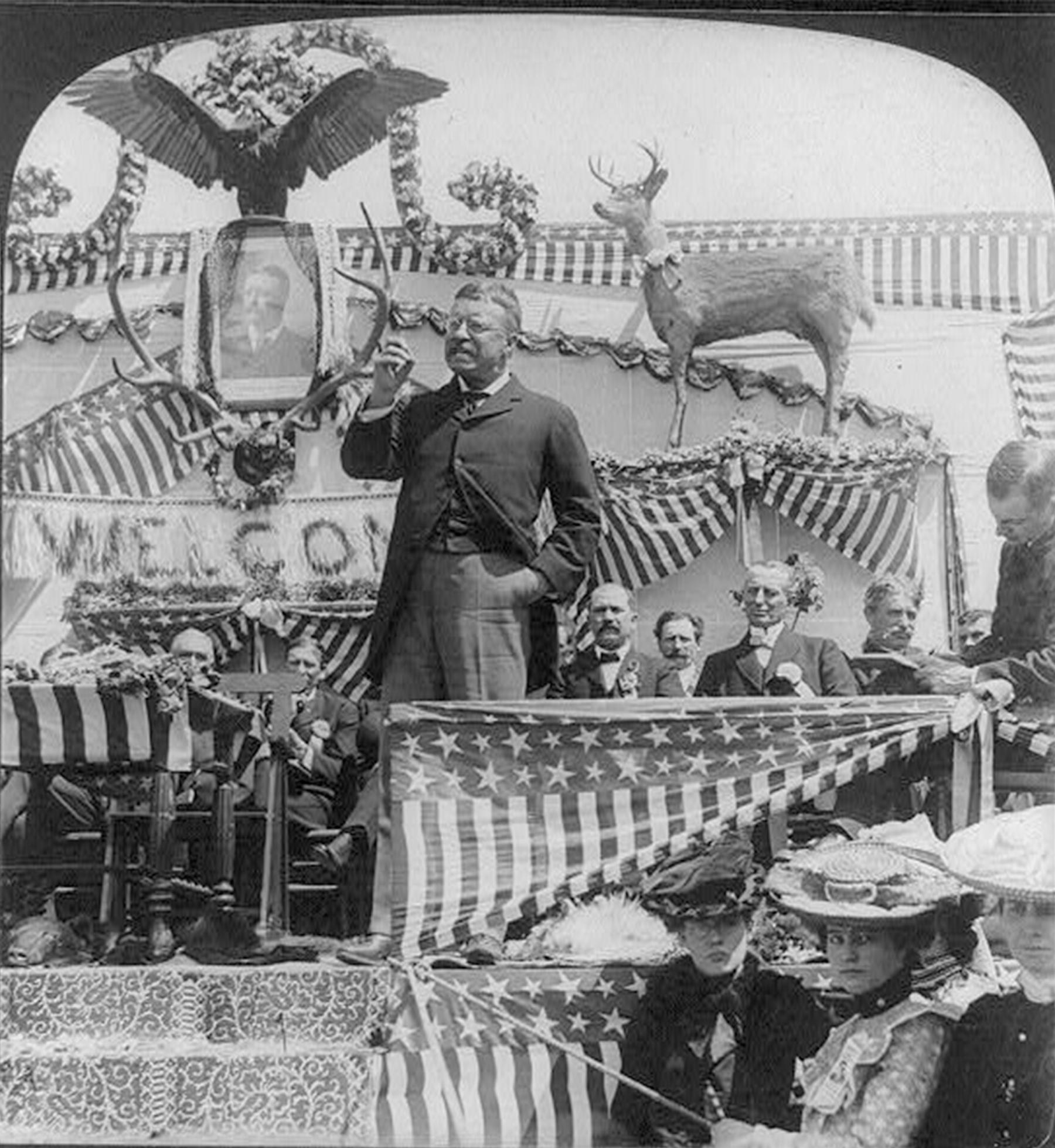
Image
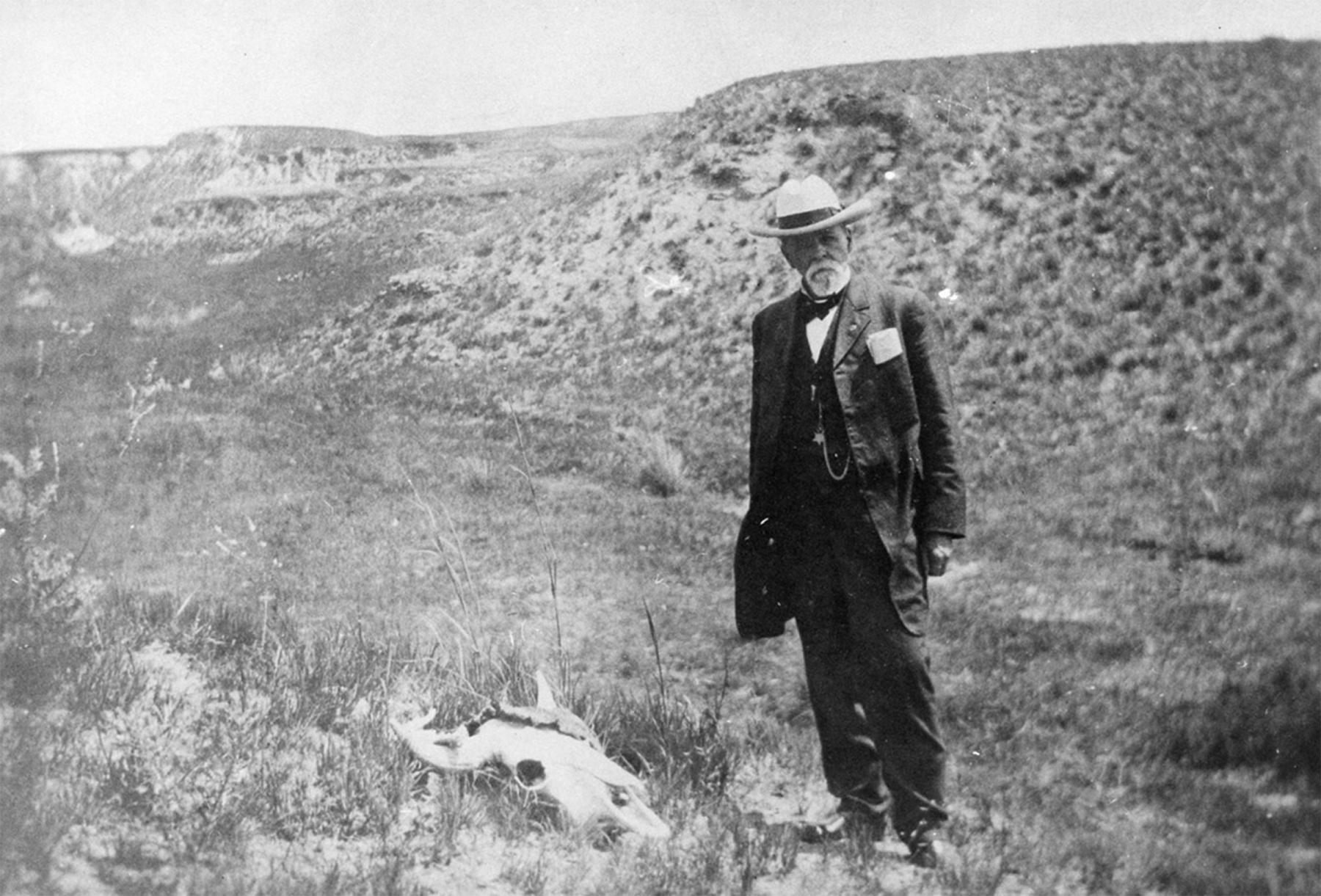
Devils Tower and Frank Mondell
In general, Mondell voted for very few preservation and conservation bills during his time in Congress. The list of bills he opposed is extensive, and the reason largely the same; Mondell wanted development and irrigation. Preserved spaces prevented that trend. In 1905, he was a high-ranking member of the House Public Lands Committee, with John Lacey as chair. There are many examples of Mondell moving against preservation and conservation-related bills, all of which he goes out of his way to discuss in detail in his memoirs. The years 1905-1906 in particular saw many conservation bills come to the floor.
For example, Mondell lamented the attempt to establish a permanent game reserve south of Yellowstone Park in 1905; against his objections the bill passed. Mondell wrote of the incident, “In this situation I felt that the only way of preventing favorable action on the game preserve bill was by securing State action, forestalling action by Congress.” He succeeded in helping the state legislature pass something that ruled out the need for a federal law.[11] Mondell’s opposition in this case was based on what he saw as federal overreach. In his mind, Wyoming was doing a good enough job on its own.
On other occasions, Mondell was less concerned about federal overreach, as shown by his opposition to the repeal of the Desert Land Act and the Timber and Stone Act, both in 1905. “I strenuously opposed these proposals,” he wrote, “and perhaps this is an appropriate place to set out briefly some of the reasons for an attitude, which for a considerable period of time brought me into sharp opposition with the views of the President and others.”[12] Mondell had clear legacy interests here: Many of these acts, especially the Desert Land Act, empowered him to pull for extensive irrigation and farming bills.
Yet at times, Mondell was simply antagonistic towards conservation bills. In late 1905 and early 1906, Congress attempted to pass another conservation bill, this time in Washington state. With a nuanced argument, Mondell was one of the only congressmen who voted against the bill.[13]
These are only a handful of examples of bills related to land conservation and preservation that Mondell openly opposed. The fact that he records these votes and conflicts in such detail in his memoirs suggests that he wanted to be remembered as someone who opposed federal overreach and land conservation in general. For a person who kept such a meticulous record of his congressional career it is curious that Mondell is silent on the Antiquities Act.
Mondell was a politician and, like many, had to balance his personal interests with those of his party and his constituents. The first interest, ever-present, was the Republican President Theodore Roosevelt, who often ran into trouble with the more conservative members of his party, including Mondell. The other interest, perhaps not so ever-present, but important, was the citizens of Wyoming.
Mondell was straightforward with his relationship with the president, especially when everything was going well. Roosevelt’s visit to Newcastle in April 1903, for example, was in Mondell’s recollection a success in strengthening both their public and political relationship.[14]
But what is done and seen in public is not always the full story. By 1906 the policy differences between the two had become an issue. With Roosevelt’s increased attention to conservation, here Mondell’s recollection becomes vague.
These differences were so pronounced that Wyoming newspapers started to take notice. The Cheyenne Leader noted in October 1906: “Mondell not only fought President Roosevelt to the bitter end during the last session of Congress on every important measure upon which the mind and heart of the President was centered, but since Congress adjourned, he has not let up in his antagonism to the nation’s chief.”[15] His supporters responded in protest but were unable to offer any specifics. It was becoming clear that conservation was the biggest gulf between the congressman and the president.
Mondell was blunter in a September 1906 protest published in a Rock Springs, Wyoming newspaper. In this case, the president had withdrawn nearly 2.5 million acres of public lands in Wyoming from development—specifically barring them from being mined for their coal deposits. Mondell sent a letter of protest to the president following the proclamation:
“The withdraw of coal lands from entry in this state has resulted in suspending contemplated developments in various portions of the state . . . I desire to further draw your attention to the fact that . . . the wholesale withdrawal . . . has more seriously and injuriously affected agricultural lands and general development.”[16]
Regardless of whether Mondell’s protest of the administration’s actions was justified, he was not a fan of many conservation and preservation policies or government overreach in this direction. The lack of newspaper defense over or mention of his conservation differences with the president and the publishing of Mondell’s anti-conservationist activities suggest that the congressman’s constituents were more with Mondell than Roosevelt on this issue.
If Mondell felt that Wyoming voters wanted or needed a Devils Tower National Monument, he surely would have promoted it in his re-election campaign in 1906. Instead, it made more sense for him not to address the issue, rather than demonstrate, as a high-ranking member of the House Public Lands Committee, that he had no real control over such a massive piece of federal legislation granting the president great powers. This was especially true if voters were not demanding it.
It was far easier to protest the president’s withdrawing lands for public use, less than a month after the monument declaration on Sept. 24, than to address the matter of Devils Tower directly. Many Wyoming newspapers didn’t start to write about Devils Tower until 1911, nearly five years after Roosevelt made it a national monument. This suggests that many people in Wyoming had other more immediate and pressing concerns, and Mondell recognized that.
By the late 1910s and into the early 1920s, Mondell’s tune began to change from ignoring the tower outright to using it, in Mondell’s pragmatic fashion, to gain leverage.
In 1920, the Hulett, Wyoming, Inter Mountain Globe reported that Mondell was trying to introduce a bill to “change the name of Devils Tower…to ‘Matoe Tepee’ a Sioux name meaning ‘Lodge of the Great Bear.’[17] Problematic spelling and stereotyping aside, the naming idea is shockingly considerate coming from Frank Mondell—and an issue Wyoming is still grappling with today. Later in Mondell’s tenure, in 1922, he attempted to get federal funding for a steel staircase from the bottom of the tower to the top, something he pushed for in 1915 also.[18] Neither of Mondell’s steel staircase bills passed through committee, but they are still good examples of his ability to take a situation and make it work for him and the state.
Mondell’s actions late in his tenure could help explain why Mattison considers Mondell among the tower’s great champions. More likely Mondell was doing what he did best throughout his congressional career: sticking to what he knew, which was land development and walking carefully around the rest. Mondell may not have directly supported creation of the first national monument, but there is little to suggest that he did anything overtly to stop it.
Image
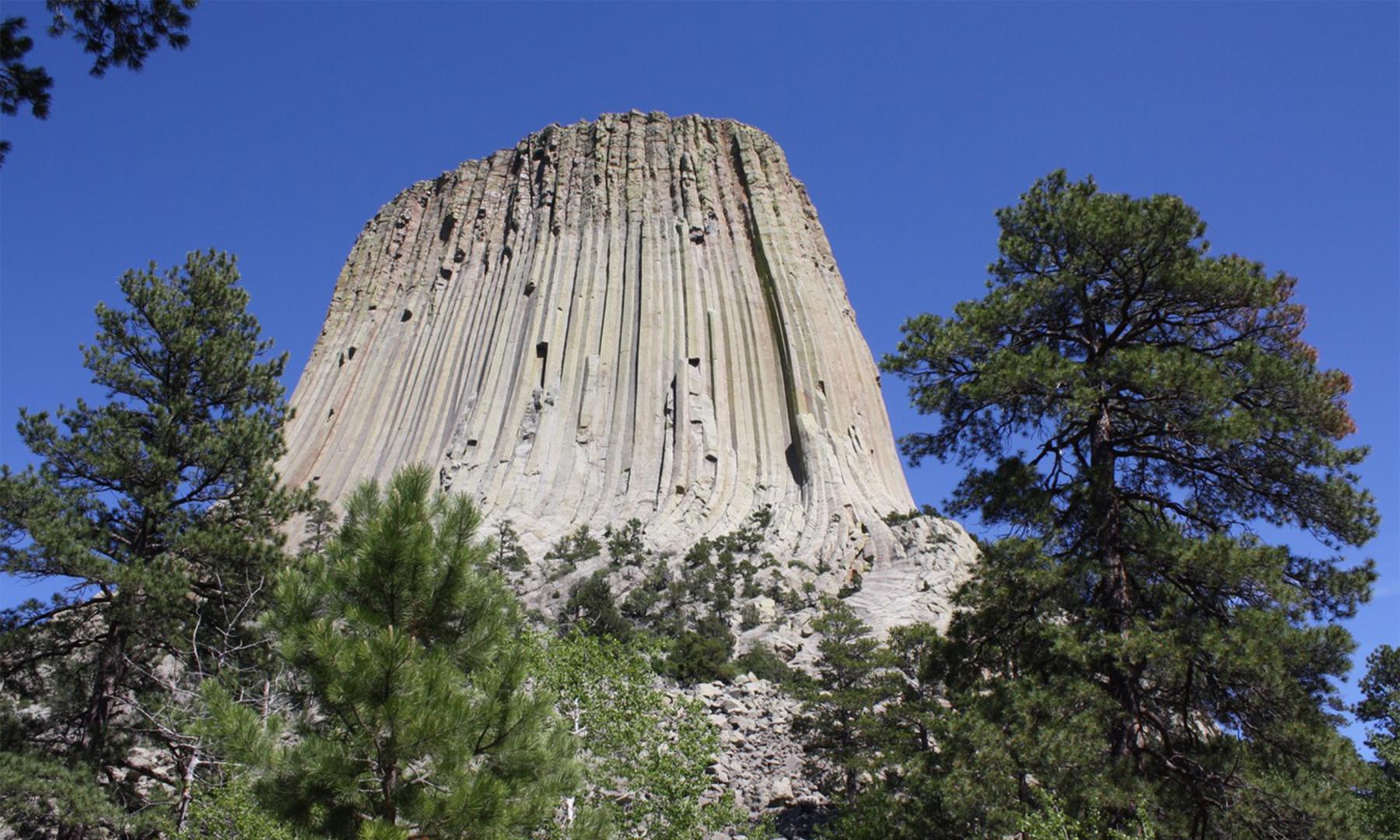
Devils Tower Today
Mondell’s contradictory legacy over Devils Tower aside, today the place is one of the most visited national monuments in the country, with the number of visitors topping a record 500,000 per year in 2021.[19] Climbers, birders, recreationists, and general nature lovers consider preservation of the tower and surrounding acres a clear victory. As of 2023, the Antiquities Act has been implemented nearly 300 times to designate a monument, a park or to enlarge an existing one.[20] Wyoming can look at Devils Tower as another “first,” and a hallmark of responsible conservation.
[Editor’s note: Special thanks to the Wyoming Cultural Trust Fund for support that in part made this article possible.]
Resources
Primary Sources
- Mondell, Frank. Papers. Box 7, Scrap Book Dec. 1906-Nov. 1907, Collection 1050, American Heritage Center, University of Wyoming, Laramie, Wyoming. (Hereafter AHC)
- _____________. My Life. Unpublished autobiography. Vol. 1-4, Box 1, Collection 1050, autobiography, AHC.
- United States Congress, House of Representatives. Congressional Record. 59th Cong., 1st sess., 1906. Vol 40, Pt. 8, accessed Jun 5, 2023 at https://www.congress.gov/bound-congressional-record/1906/06/05
- National Park Service, Foundational Document, “Devils Tower National Monument, 2014. United States President. Proclamation 658. “Devils Tower National Monument, Wyoming.” Sept. 24, 1906, accessed Sept 17, 2023 athttp://npshistory.com/publications/foundation-documents/index.htm#d.
- Wyoming Digital Newspaper Collection, accessed Jun 15, 2023 at https://wyomingnewspapers.org/: Intermountain Globe, Hulett, WY; The Times, Sundance, WY
Secondary Sources
- Brinkley, Douglas. The Wilderness Warrior: Theodore Roosevelt and the Crusade for America. New York: HarperCollins Publishers, 2009.
- United States Department of the Interior. National Park Service. “It’s Busy Here.” Last updated July 23, 2022, accessed Aug. 31, 2023 at https://www.nps.gov/deto/learn/management/statistics.htm.
- __________________________________________. National Park Service. Mattison, Ray H. “First Fifty Years of Devils Tower National Monument,” 1955, accessed Jun 5, 2023. https://www.nps.gov/deto/learn/historyculture/index.htm.
- __________________________________________. National Park Service. “National Monument Facts and Figures,”Last updated Aug. 15, 2023, accessed Aug. 31, 2023 at https://www.nps.gov/subjects/archeology/national-monument-facts-and-figures.htm.
Illlustrations
- The black and white photo of Devi’s Tower is by Black Hills photographer John C. H. Grabill, from the Library of Congress via Wikipedia. Used with thanks.
- The photo of U.S. Sen. Francis E. Warren in a white suit is from the Library of Congress via Wikimedia. Used with thanks.
- The undated photo of Frank Mondell is from Wyoming State Archives. Used with permission and thanks.
- The photo of Theodore Roosevelt giving a speech in Newcastle, Wyo., in 1903 is from the Library of Congress. Used with thanks.
- The photo of John F. Lacey and a skull is from a Boone and Crockett Club web page. Used with thanks.
[1] Ray H. Mattison, “First Fifty Years of Devils Tower National Monument,”(1955) National Park Service, accessed Jun 3, 2023, https://www.nps.gov/deto/learn/historyculture/index.htm
[2] Douglas Brinkley, The Wilderness Warrior: Theodore Roosevelt and the Crusade for America (New York: HarperCollins Publishers, 2009), 200.
[3] Brinkley, The Wilderness Warrior, 270-271.
[4] “Preserving American Antiquities,” Visit the Capitol, Artifact Explorer, accessed Jun 5, 2023, https://www.visitthecapitol.gov/artifact/s-4698-bill-preservation-ameri….
[5] A Bill for the Preservation of American Antiquities, S. 4698, on Jun 5, 1906, Cong. Rec. 59th Cong., 1st sess. 1906, vol 40, pt, 8: H7888.
[6] Congressman Lacey speaking on the Preservation of American Antiquities, on Jun 5, 1906, Cong. Rec., 59th Cong., 1st sess., 1906, vol 40, pt, 8: H7888.
[7] Cong. Rec., 59th Cong., 1st sess., 1906, vol 40, pt. 8: H7888.
[8] Brinkley, The Wilderness Warrior, 633.
[9] National Park Service, Foundational Document, “Devils Tower National Monument, 2014, 28. United States President. Proclamation 658. “Devils Tower National Monument, Wyoming.” Sept. 24, 1906, accessed Sept 17, 2023. http://npshistory.com/publications/foundation-documents/index.htm#d
[10] Ray H. Mattison, “First Fifty Years of Devils Tower National Monument,”(1955) National Park Service, accessed Jun 3, 2023, https://www.nps.gov/deto/learn/historyculture/index.htm
[11] Mondell, Unpublished Autobiography, My Life, vol. 2, Box 1, Collection 1050, Autobiography, Frank Mondell Papers, American Heritage Center, University of Wyoming, 318.
[12] Mondell, Unpublished Autobiography vol. 2, 321.
[13] Mondell, Unpublished Autobiography vol. 2, 371.
[14] Mondell, Unpublished Autobiography vol. 2, 292.
[16] “Ever Busy Mondell: Recent Executive Order withdrawing Coal Lands Protested Against by Wyoming Congressman,” newspaper clipping, Box 7, Collection 1050, Scrap Book Dec 1905-Nov 1907, Frank Mondell Papers, American Heritage Center, University of Wyoming.
[17] Moorcroft Democrat, “Change Name of Tower,” Inter Mountain Globe, Vol. 14, number 48, November 25, 1920, Hulett, WY, Wyoming Digital Newspaper Collection, accessed Jun 15, 2023, https://wyomingnewspapers.org/?a=d&d=WYIMG19201125-01.1.1&srpos=35&e=--…------.
[18] “Bills in Congress of Much Interest to Crook County,” The Times, Vol. 07, Number 08, December 15, 1915, Sundance, Wyoming, Wyoming Digital Newspaper Collection, accessed Jun 15, 2023 https://wyomingnewspapers.org/?a=d&d=WYTIM19151215-01.1.1&srpos=17&e=--…------.
[19] “It’s Busy Here,” National Park Service, last updated Jul 23, 2022, accessed Aug 31, 2023, https://www.nps.gov/deto/learn/management/statistics.htm.
[20] “National Monument Facts and Figures,” National Park Service, last updated Aug 15, 2023, accessed Aug 31, 2023, https://www.nps.gov/subjects/archeology/national-monument-facts-and-figures.htm.
